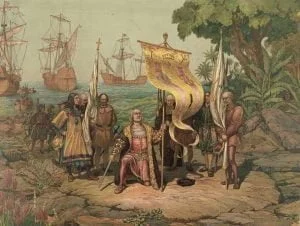Onondaga Tribe
Onondaga Indians, Onondaga Nation, Onondaga First Nation, Onondaga People (Onoñtǎ’´ge‘,’on, or on top of, the hill or mountain’). An important tribe of the Iroquois confederation, formerly living on the mountain, lake, and creek bearing their name, in the present Onondaga County, New York, and extending northward to Lake Ontario and southward perhaps to the waters of the Susquehanna. In the Iroquois councils they are known as Hodiseñnageta, ‘they (are) the name bearers.’ Their principal village, also the capital of the confederation, was called Onondaga, later Onondaga Castle; it was situated from before 1654 to 1681 on Indian hill, in the … Read more

